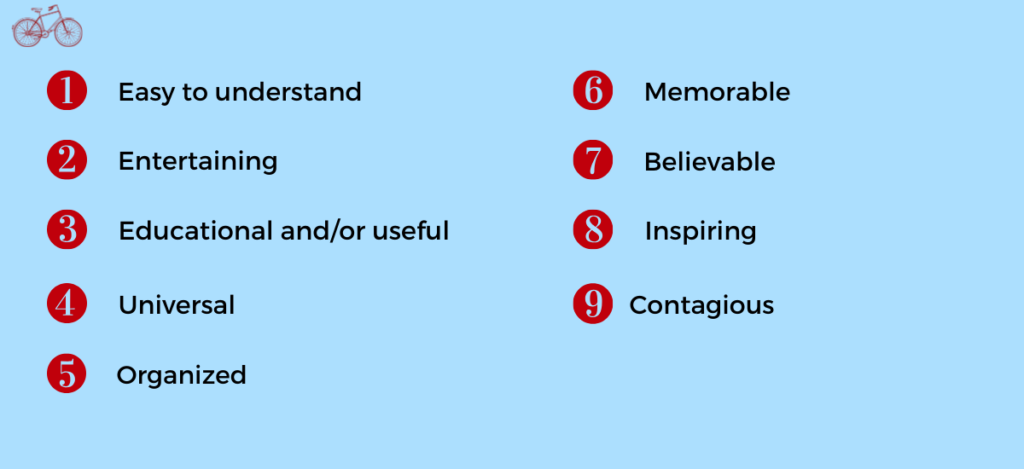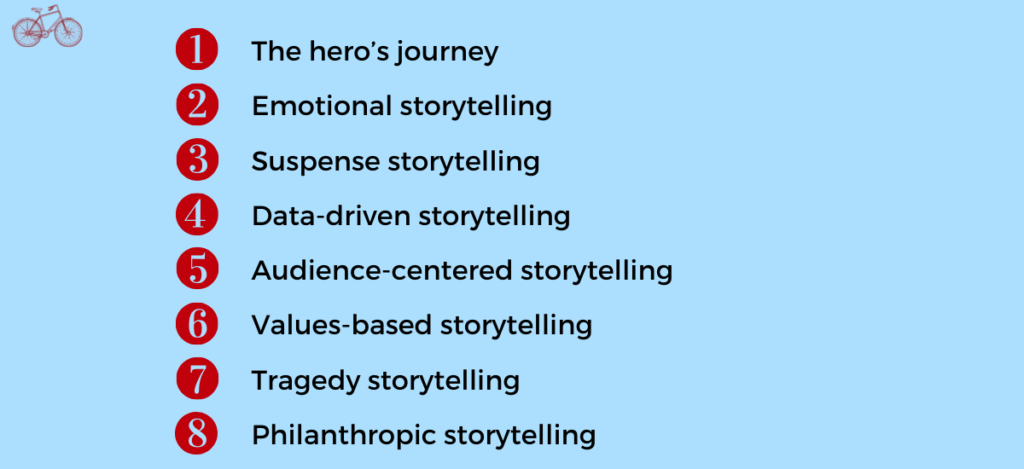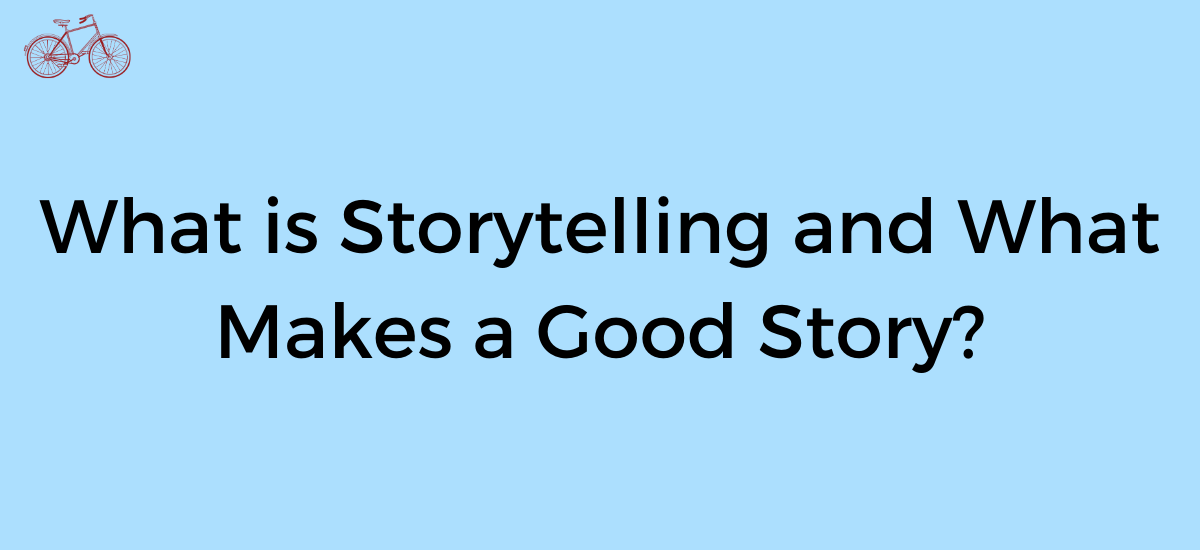Storytelling is an important skill. Stories sell products, they spread ideas, and they make change happen.
Whether looking to write books or be a better marketer, working on storytelling skills can pay off. Which is why we’re going to talk about storytelling and the elements of a good story.
Read on to get a better understanding of stories.
What is storytelling?
Storytelling is the act of telling stories. It’s the process of engaging with an audience to paint a picture with words.
Telling a story is creating a narrative to help your audience understand a particular message. This can be fact, fiction, or a mix of both.
Stories communicate a message in a way that your audience can understand. Storytelling is primarily used to motivate change.
Download our marketing campaign storytelling template and improve your storytelling today.
Why do we tell stories?
The point of storytelling is to motivate change.
As a marketer, this is perfect. Our primary purpose is to motivate change and create action.
Stories help us process information and make sense of the world around us. Below are a few reasons we tell stories.
Process information
When presented information, our minds naturally formulate stories. It is how the mind processes information to make sense of the world.
Remember information
We remember information better when it is presented in a story. Jennifer Aaker of Stanford University tells us that we remember information 22x better when it’s presented as a story.
Recognize patterns
As our mind is processing information and crafting stories, this process is helping us to recognize patterns. A story helps us connect dots and get to a conclusion.
If we need our audience to connect the dots between a problem they currently have and the solution we offer, we’re best to help them along with a story.
We love stories for a lot of reasons. As storytellers, they help us motivate change. As story consumers, they help us process information and make sense of the world.
What makes a great story?
We know a little bit about stories and why we tell them. Now, let’s begin discussing what makes a great story.
A great story captivates our audience and pulls them down the page. We’re going to discuss a few of the elements that make great stories and some strategies you can use to craft a great story of your own.
Elements of a great story
Great stories all contain a few elements. We have listed some elements of a great story below. Your story does not have to contain all of these elements at once, but it should hit on at least one. At times, a great story really only needs to hit one of the elements really well.
The following are some elements to a great story.

Easy to understand
Great stories are easy to understand. Your audience should quickly identify with your story and be able to easily digest the content.
Entertaining
Entertainment is a consistent way to tell a great story. Finding a way to entertain your audience while delivering your message is a great way to craft a good story.
Educational and/or useful
Using an element of education, or a story that is useful now, is another way a great story is crafted. Leaving your audience walking away with actionable insights can keep them engaged.
Universal
Great stories have the ability to be universal. The audience is able to see themselves in the characters. A great conflict in a story is one that we all face or at least acknowledge.
Organized
To keep readers engaged, a story has to be logical. Thus, it’s organized. It follows a set structure that can logically get a reader from beginning to end.
Memorable
The worst thing a story can be is un-memorable. If your audience doesn’t remember your story, they can’t share it. Give the audience a story they’ll remember.
Believable
A story has to be believable to the audience. If they don’t believe what is happening, it’s going to be hard to engage the audience and make them remember the story. A great story is crafted in a way that is believable.
Inspiring
Inspiration is a great element you can use to craft great stories. Leaving an audience walking away feeling inspired and empowered can help lead to change and action.
Contagious
A contagious story is one you can’t help but share. Providing an element of contagion can get your story to spread like you want.
These elements are good to understand. But, we also want to know how we can use these to craft a great story. To do that, here are some storytelling strategies that work.
Great storytelling strategies
Crafting a great story with the above elements takes a strategy. Before telling your story, it’s good to provide it some structure. To understand how you’re going to present the story. Here are tried and true storytelling strategies at your disposal.

The hero’s journey
In 1949, Joseph Campbell published his most popular work detailing his theory of the hero’s journey. It is a widely used narrative structure for developing stories. When looking for a strategy to craft your story, when applicable, the hero’s journey is a great framework.
Emotional storytelling
Building an emotional connection with your audience is a great strategy to build a story. This strategy uses emotional connection to “pull at the heart strings” of your audience. It provides a deep level of connection that can help you move an audience.
Suspense storytelling
Using suspense in your marketing is another strategy to keep your audience captivated. Suspense – just like a thriller novel – can keep your audience on the edge of their seat. This can keep your audience engaged and top of mind.
Data-driven storytelling
Needing to present data can be difficult. Doing so with a story can assist your audience in digesting the information. This is also the best way for audiences to remember the information needed. Like mentioned above, your audience is 22x more likely to remember a story than facts alone.
Audience-centered storytelling
While our marketing should always focus on our audience, building a story around an audience is a great tactic. In marketing, this can look like user-generated content. Or, customer case studies.
Values-based storytelling
Values-based storytelling takes the values you hold as an organization, then telling that story to attract an audience that shares those values.
Tragedy storytelling
Using tragedy is a tried a true method of storytelling. Think Shakespeare when you think tragedy. This can be a way to frame stories to engage your audience effectively.
Philanthropic storytelling
For social organizations, telling the story of philanthropy can be a great strategy. Ultimately, it’s why these types of organizations exist.
Great stories don’t just happen. It takes the right elements and a storytelling strategy to convey your message the right way. Now that you know what storytelling is and what makes a great story, it’s time to craft a story of your own.
These are many ways for you to get started in thinking about how to plan your story for your next marketing campaign.

